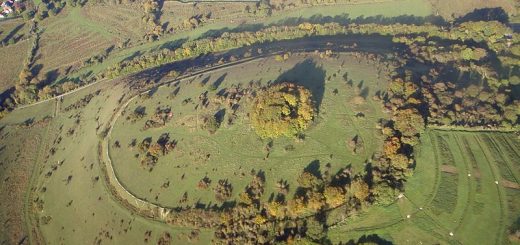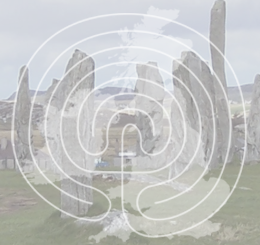St Sidwell’s (Sativola’s or Sadfyl’s) Well
According to ‘The Legendary Lore Of The Holy Wells Of England’ by Robert Charles Hope (1893). ‘On the spot where St. Sidwella is reputed to have been martyred is the well dedicated in her honour; it is situated on the left-hand of the Exeter side of the tunnel leaving the city, at a place called Lion’s Holt.
St. Sidwella, virgin martyr 740, was, buried near St. Sidwell’s Church, Exeter. William of Worcester speaks of her thus : “Sancta Satwola virgo canonizata ultra portam orientalem.” She is commemorated on December 18.
A fine spring near the church supplied the ancient well bearing her name, by which, tradition has it, she lived the life of a recluse.
In the east window of Exeter Cathedral she is represented with a scythe in her hand, and a well behind her, probably but a rebus on her name Sithewella; she also figures on one of the columns in the cathedral, carrying her head in her hands (Cal. Ang. Ch., 287).
Bishop Grandison, in his Legenda Sanctorum, states that St. Sidwella was the eldest of four devout sisters, daughters of Benna, a noble Briton residing in Exeter. On his death, her cruel and covetous stepmother, envious of the fortune of St. Sidwelia, who inherited considerable property in the eastern suburbs of the city, engaged one of her servants, a reaper or mower, to become her assassin, which he did, whilst she was occupied in her devotions, near the well in Hedewell Mede, at a little distance from the parish church which still bears her name.’
Unfortunately the original modified Saxon church of St Sidwell’s was destroyed in May 1942 during a German air raid. The current church was built as a replacement in the 1950’s.
Hope continues stating that ‘The locality of the spring agrees very well with this, as it is situated in what is now called Well Lane [now Well Street]. Some time hence people may wonder why this street is so called, as the well is not now to be seen; it has been destroyed, and the site is occupied by a house which has been built over it. The well, however, is distinctly marked on Rogers’ map of Exeter, dated 1744, as Sidwell’s Well.”–Trans. and Reports Dev. Ass., xii. 449.’





Re: St Sidwell’s (Sativola’s or Sadfyl’s) Well
‘The history and description of the city of Exeter’ by Alexander Jenkins 1806 says ‘In a brick ground adjoining Well lane some years since were discovered several Urns containing human ashes as supposed they were of very coarse workmanship and bedded very deep in the clay one of these Urns is now in the possession of Nicholas Strong Gardener And in another brick field near St Ann’s Chapel a small patera of a regular circular figure with a foot neatly turned was found at the depth of twelve feet in a solid bed of clay which to all appearance had never been broken into this patera is made of a beautiful red earth or clay of excellent workmanship and had been highly glazed some part of which is still remaining it is now in the possession of James Wescombe Brickinaker.’